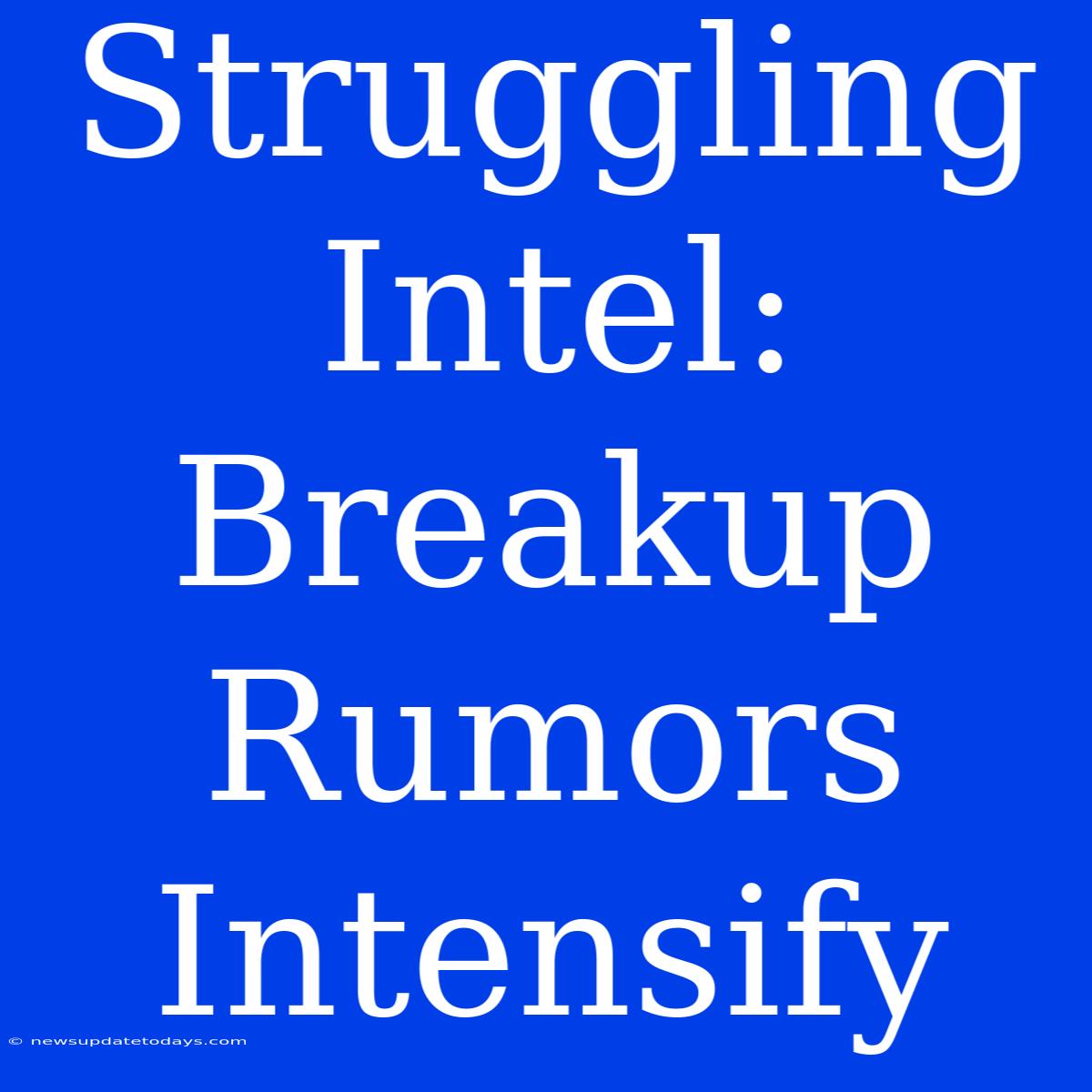Struggling Intel: Breakup Rumors Intensify – Is a Split the Only Solution?
Intel, once the undisputed king of the chipmaking world, is facing a storm. Recent performance struggles and increasing competition have fueled persistent rumors of a potential breakup of the company. Is this drastic measure the only way to revitalize the tech giant, or are there other paths to recovery? This article delves into the intensifying breakup rumors and explores the potential implications for Intel and the wider tech industry.
The Current Crisis at Intel
Intel's recent financial performance has been far from stellar. Falling behind rivals like AMD in CPU performance and facing challenges in the burgeoning market for GPUs has significantly impacted its market share and investor confidence. This underperformance, coupled with significant investments in new manufacturing processes, has left the company struggling to meet expectations.
Key factors contributing to Intel's struggles:
- Manufacturing Delays: Intel's ambitious plans for advanced manufacturing processes have faced significant setbacks, leaving it trailing competitors in terms of chip production capabilities.
- Competition from AMD: AMD's aggressive advancements in CPU and GPU technology have significantly eroded Intel's market dominance.
- Growing Importance of Foundries: The rise of independent foundries like TSMC has shifted the landscape, making it more challenging for Intel to maintain its position solely as a chip designer and manufacturer.
The Breakup Speculation: A Closer Look
The persistent rumors of an Intel breakup suggest a division of the company into two separate entities: one focused on design and the other on manufacturing. This strategy, proponents argue, could unlock significant value.
Potential Benefits of a Split:
- Increased Focus: Separating design and manufacturing would allow both entities to specialize and optimize their operations, leading to increased efficiency and innovation.
- Enhanced Competitiveness: A more agile design arm could respond faster to market trends, while a dedicated manufacturing arm could focus on scaling production and improving yields.
- Attracting Investment: A more focused structure could be more appealing to investors, potentially unlocking new avenues for funding and growth.
Potential Drawbacks of a Split:
- Loss of Synergies: Separating design and manufacturing could lead to a loss of critical synergies, potentially hindering innovation and efficiency.
- Increased Costs: Operating two separate entities would likely result in higher overhead costs, potentially impacting profitability.
- Integration Challenges: Coordinating the two separate entities could present significant logistical and operational challenges.
Alternatives to a Breakup
While a breakup might seem like a radical solution, it’s not the only option. Intel could also pursue several other strategies to address its challenges:
- Aggressive Investment in R&D: Focusing on accelerating innovation in both CPU and GPU technologies could allow Intel to regain lost ground.
- Strategic Partnerships: Collaborations with other companies could leverage external expertise and resources to enhance manufacturing capabilities.
- Restructuring Operations: Internal streamlining and restructuring could improve efficiency and reduce costs.
Conclusion: A Critical Juncture for Intel
Intel finds itself at a critical juncture. While the breakup rumors highlight the severity of the challenges it faces, it remains unclear whether this drastic measure is the optimal solution. A careful evaluation of the potential benefits and drawbacks, alongside exploration of alternative strategies, is crucial to determine the best path forward for this tech giant. The coming months will be crucial in determining Intel's future and the impact on the global semiconductor industry.

